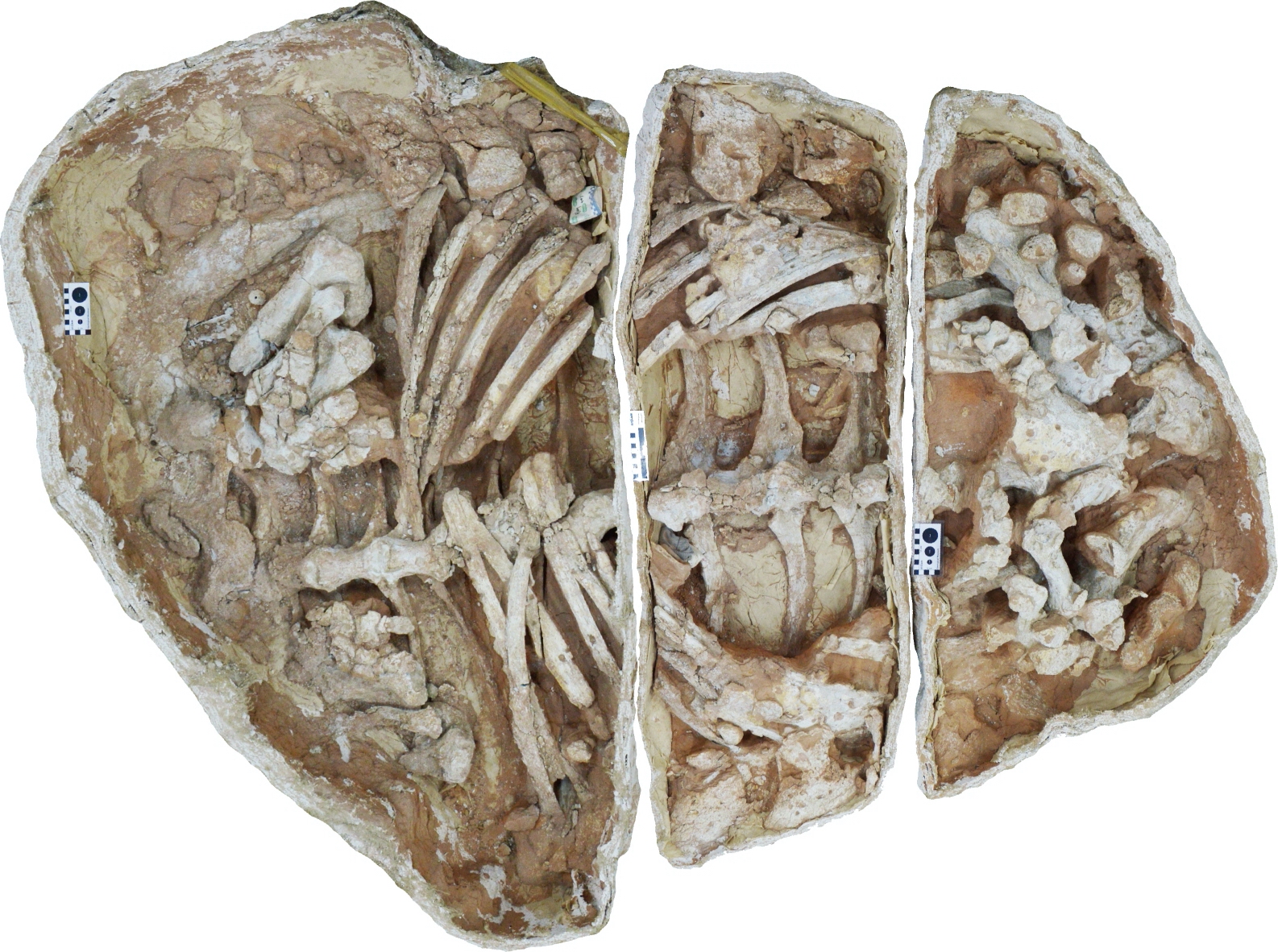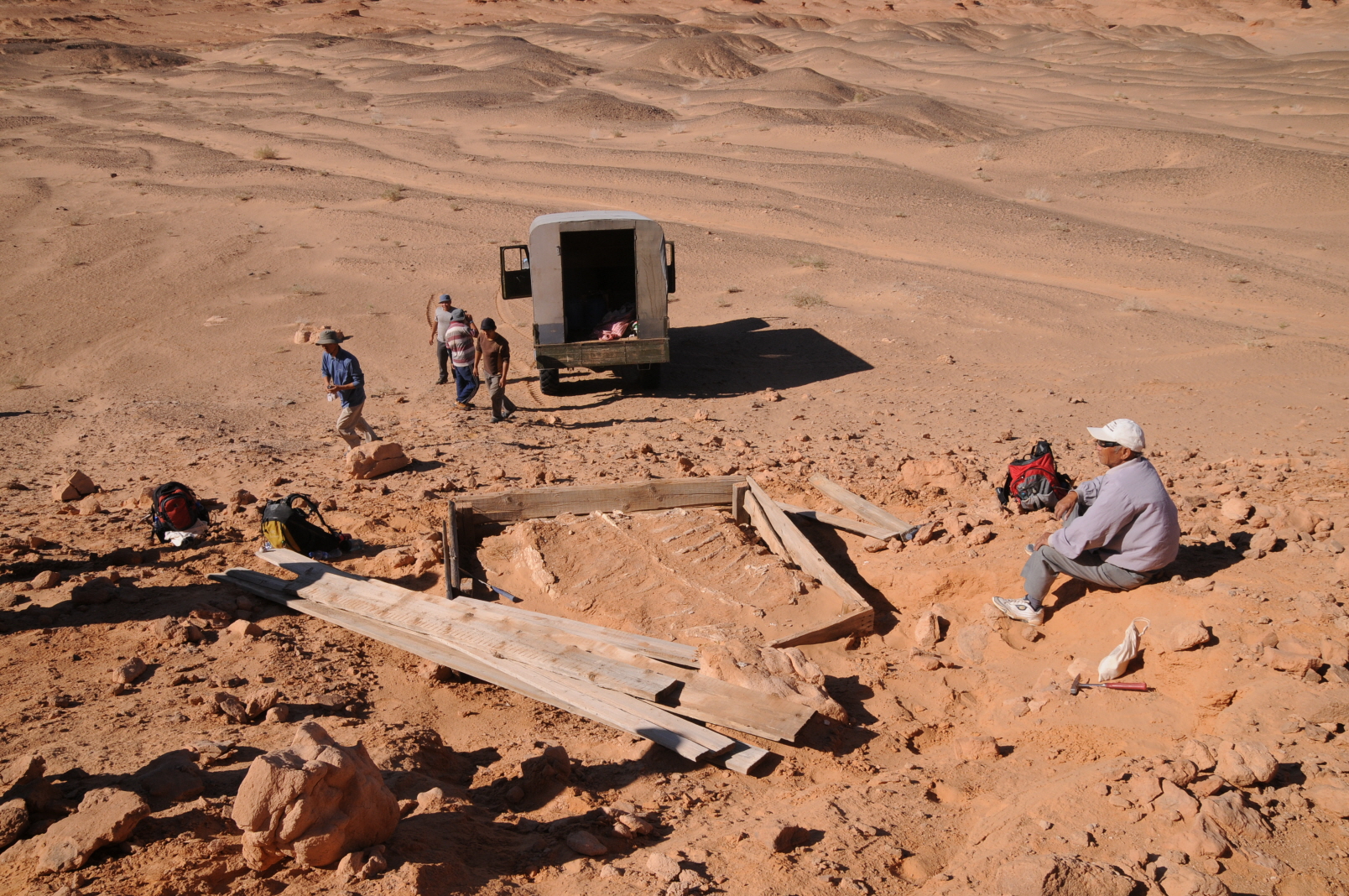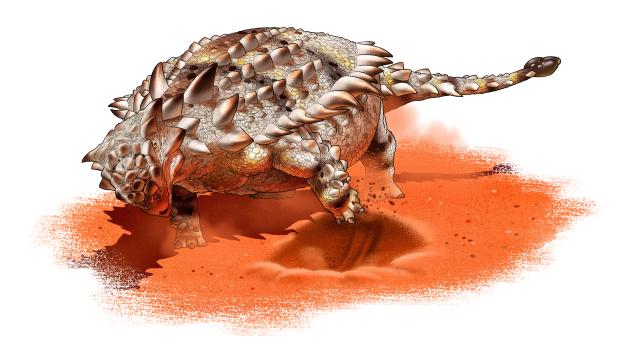The headless horseman would make fast friends with an Asian ankylosaur; where the former tends to be missing its head, these dinosaurs are often found without their body. In fact, the dearth of ankylosaur bodies has vexed paleontologists, who are eager to learn more about how the hefty herbivores became clubbed-tailed, heavily armoured tanks.
Now, an international team of researchers has described the post-cranial remains of an ankylosaur from Mongolia’s Gobi Desert, expanding paleontologists’ understanding of the diversity and evolution of this family. The team suggests that ankylosaurs may have used digging for defensive or strategic purposes. Their research on a Cretaceous ankylosaur — yet to be associated with a particular species, as ankylosaurs are described based on their skulls, and this skeleton was found without one — was published today in Scientific Reports.
[referenced id=”1041829″ url=”https://gizmodo.com.au/2017/05/how-does-a-110-million-year-old-dinosaur-still-have-its-skin/” thumb=”https://gizmodo.com.au/wp-content/uploads/2017/05/16/irzdhzskgoytyuc1rdge-300×200.jpg” title=”How Does A 110-Million-Year-Old Dinosaur Still Have Its Skin?” excerpt=”An arresting image of a “mummified” dinosaur went viral this weekend after National Geographic broke the story of the 110-million-year-old armoured plant-eater, a newfound species of nodosaur whose exquisite remains are now on display in the Royal Tyrrell Museum in Alberta, Canada.”]
This ankylosaur fossils is embedded in a chicken nugget-shaped cast. It’s been dead for about 70 million years, and though discovered some 50 years ago, it took until 2008 for an excavation team to have enough resources and time to analyse the fossil. It was transported to a South Korean lab in 2012 to be prepared and returned to Mongolia four years later.

“Articulated body skeletons of armoured dinosaurs are quite rare,” said Yuong-Nam Lee, a paleontologist at Seoul National University in South Korea and lead author of the paper, in an email. “The nearly complete skeleton that we have studied lately provides valuable information about their evolution and behaviour. By comparing our specimen to other related dinosaurs, we now know that the armoured dinosaurs of Asia evolved rigid bodies and decreased the number of pedal phalanges [toes] through time.”
You may think that an ankylosaur having a rigid body isn’t news. But Lee’s team found this Mongolian dinosaur to have even less flexibility than its ankylosaurid cousins from North America, perhaps to support their longer tails or due to their fused vertebrae. The reduced toe count, they authors wrote, likely came about as an adaptation to support their heavier weight. This also would’ve reduced the animals’ mobility, making the Asian ankylosaurs even more tank-like than previously believed.

Perhaps most significantly, the paleontological team argues that ankylosaurs may have been built to dig. That skeletal rigidity would have stabilised the animal when it was digging with its forelimbs, they wrote, and the slight curve to its toes would have given its front feet a trowel-like shape. The authors don’t suggest that ankylosaurs were burrowing animals, per se — more that, when facing off with a ferocious theropod, they could dig trench-like depressions and hunker down, with just their bony skin exposed to the surface. Lee likens this behaviour to modern horned lizards.
“We are curious whether young ankylosaurs were also capable of digging,” Lee said. “Baby ankylosaurs lack extensive body armour on their bodies, and this must have made them vulnerable to predators. If the babies could dig, then dwelling in underground spaces seems possible, like armadillos do today.”
This is speculative, but having a well-articulated skeleton gives future paleontologists something more to look at than a thick skull. The study authors found perforated holes on the skeleton, evidence of dermestid beetles, which are known for their appetite for rotting flesh. That suggests the animal laid around for at least a little while post-mortem.
“Digging like modern-day elephants as for minerals, food, or water, I could see, as this behaviour has been suggested for sauropods as well,” said ReBecca Hunt-Foster, the paleontologist for Dinosaur National Monument in Utah, who is unaffiliated with the new paper. “They may also have used their digging to excavate nests. Behaviour can be hard to infer from body fossils alone, however.”
The researchers also found five theropod phalanges embedded in the ankylosaur’s ribs — clearly, this dinosaur had a good reason to wear so much protection.
